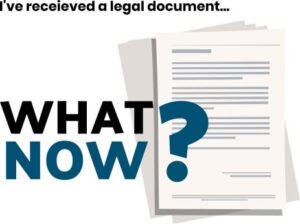What is a subcontractor’s charge?
A subcontractor’s charge is a way for a subcontractor to secure monies that are owed to them under a contract by someone higher in the contractual chain.
Essentially, it allows the subcontractor to bypass the contractor they were engaged by and instead put the principal or even the landowner of a project on notice for payment.
When can a subcontractor’s charge be lodged?
A subcontractor’s charge generally only covers payment claims if certain conditions have been met. To lodge a charge, the following needs to apply:
-
- your payment claim is for work done under your subcontract; and
-
- money is still owed to the contractor by the person higher in the contractual chain — if the contractor has been paid in full, then a subcontractor’s charge cannot be used.
Who can lodge a subcontractor’s charge?
If the above conditions have been met, then a subcontractor’s charge can be lodged by any subcontractor who has been engaged to carry out work under a building contract by a contractor. This work could be related to building or land work, such as construction, demolition, alteration, and building repair.
How is a subcontractor’s charge lodged?
The first step in lodging a subcontractor’s charge is for the subcontractor to lodge a Form s122 Notice of Claim to the principal of the project and the contractor that engaged them. This form is available online here.
The Notice of Claim form requires information such as:
-
- the monetary amount of the claim;
-
- details of the work that has been done or the goods that have been supplied;
-
- details about the contractor; and
-
- details about the project’s principal.
If the subcontractor does not have the information readily available, they will need to ask the contractor for it in writing. The contractor must respond to the request for information within ten business days. If the contractor fails to do so, this can be reported to the Queensland Building and Construction Commission (QBCC) for investigation.
The claim will also need to be certified by a qualified person, which under the Building Industry Fairness Act could be a registered architect, registered engineer, or a person licensed to carry out or supervise work that the claim relates to under the Queensland Building and Construction Commission Act 1991 (Qld) (the QBCC Act).
There are strict time limits that apply when lodging subcontractors’ charges. For example — if the project work has reached the practical completion stage, then the subcontractor’s charge must be lodged within three months.
If the Notice of Claim form is not served on both the principal and the contractor, the subcontractor’s charge will have no effect.
What happens after the subcontractor’s charge has been lodged?
Once the subcontractor’s charge claim has been lodged, the contractor has ten business days to respond. The contractor responds to both the subcontractor and the person higher in the contractual chain (usually the project principal or landowner) in a response to notice of claim form.
They have the option to accept or dispute the claim. If the claim is disputed, the full amount may be disputed, or a partial amount may be disputed.
If the contractor does not respond within the timeframe, they can be reported to the QBCC.
If the contractor accepts liability for the subcontractor’s claim, the person higher in the contractual chain will pay the subcontractor the claimed amount or the amount that has been stated in the contractor’s response.
If the contractor disputes or does not accept the subcontractor’s claim, the subcontractor can commence court proceedings to have the charge enforced.
Court proceedings must be commenced within one month from when the notice of claim was first given.
What are the benefits of subcontractors’ charges?
One of the main benefits of a subcontractor’s charge is that it provides protection for the subcontractor — especially in the instance of a building company going into liquidation.
If the contractor who engaged the subcontractor goes into liquidation, and the subcontractor has lodged a subcontractor’s charge claim, then the subcontractor becomes a secured creditor in the liquidation. This means that the subcontractor will be prioritised over other creditors of the company.
What are the downsides of subcontractors’ charges?
A subcontractor’s charge requires adherence to strict timeframes as well as accurate information. If a subcontractor fails to provide the correct and accurate information or to adhere to the timeframes, then the subcontractor’s charge claim may be ineffective.
It can also affect relationships in the building industry if a claim is lodged when it may not have been the best course of action and could affect the subcontractor’s ability to secure work in the future. This is not to say that you shouldn’t pursue this course of action if a subcontractor is owed money, rather, if a subcontractor finds themselves in this situation, then their best course of action is to understand where they stand legally — this is where we come in.
How Gibbs Wright can help you
Before you lodge a claim for a subcontractor’s charge, it may be best to seek legal advice from a building and construction lawyer. Lodging subcontractor’s claims requires strict compliance to the BIF Act and is usually used as a last resort measure.
If you’re a subcontractor and you’re concerned about your contract or being paid for the work you have done, you can discuss your situation with our experienced construction lawyers during a free, no obligation consultation, and we can help you understand the best course of action for your circumstances. Work with Queensland’s leading construction lawyers today.




